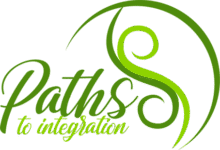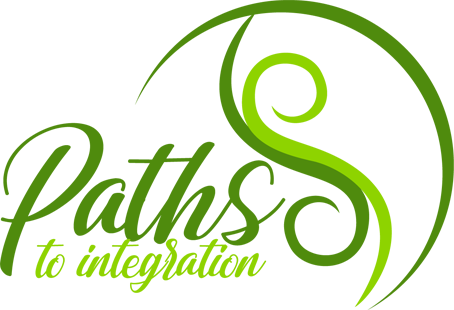Los Diez Principios Esenciales del Tai Chi Chuan
LOS DIEZ PRINCIPIOS ESENCIALES DEL TAI CHI CHUAN
Dictados por Yang Chengfu
Escritos por Chen Weiming
Los Principios Esenciales del Tai Chi Chuan los dividiremos en 3 tópicos principales:
– Corregir la estructura corporal
– Coordinar los movimientos
– Armonizar la mente
CORREGIR LA ESTRUCTURA CORPORAL
1.- La energía en lo alto de la cabeza debe ser ligera y sensible (Mantener la cabeza erguida)
«La energía en lo alto de la cabeza» es mantener la cabeza y la nuca naturalmente erguida con el cuello relajado (como si se suspendiera desde arriba), sin emplear la fuerza muscular, que volvería rígido al cuello y perturbaría la circulación de la sangre y el hálito (chi). Tus ojos deben orientarse hacia el frente. De esta manera, la energía espiritual (shen) podrá alcanzar el punto más elevado (baihui).
Que tu espíritu sea espontáneo y ágil para que la fuerza vital pueda ponerse en movimiento.
2.- Relajar la cintura.
La cintura gobierna todo el cuerpo. Cuando relajamos la cintura, los pies tienen fuerza para formar una base sólida (enraizarse) y la pelvis toma asiento.
Los pasajes de «lleno» a «vacío» se efectúan a partir de movimientos giratorios de cintura. Por eso se dice: «La fuente de mando está en la cintura». La falta de fuerza proviene de la cintura y de las piernas.
3.- Hundir ligeramente el pecho y sacar la espalda
Mantenga el pecho ligeramente hacia adentro para que el hálito (chi) baje a concentrarse en el Tantieninferior (bajo vientre). Evite sacar el pecho, pues, al estar el hálito comprimido a este nivel, la parte superior del cuerpo estará pesada, la inferior liviana y los pies tendrán tendencia a flotar. Entrar el pecho acarrea naturalmente un estiramiento de la espalda, lo que permite emitir la fuerza a partir del eje espinal. Una gran fuerza puede surgir desde la columna sólo cuando mantiene la energía vital (chi) en el bajo vientre. Hundir el pecho y sacar la espalda es similar a cuando un gato se dispone a lanzar un ataque a su presa.
4.- Bajar los hombros y dejar caer los codos
Bajar los hombros consiste en relajarlos y dejarlos caer, si elevamos los hombros, el chi subirá con ellos y todo el cuerpo va a quedar sin fuerza. Dejar caer los codos a lo largo del cuerpo es bajarlos, si están levantados los hombros no se pueden relajar, lo que dificulta el poder mover nuestro cuerpo de manera suave.
COORDINAR LOS MOVIMIENTOS:
5.- Distinguir lo “lleno” y lo “vacío”
En el arte del Tai Chi Chuan, es imprescindible distinguir lo «lleno» de lo «vacío». Si trasladamos el peso del cuerpo a la pierna derecha, entonces la pierna derecha va a estar plantada sólidamente en el suelo, se dice que la pierna derecha esta “llena” y la pierna izquierda va a estar vacía. Cuando el peso está en la pierna izquierda, entonces la pierna izquierda estará sólidamente plantada en el suelo y la pierna derecha estará vacía. Los movimientos giratorios son efectuados con liviandad, agilidad y sin el mínimo esfuerzo si se sabe distinguir lo «lleno» y lo «vacío»; en caso contrario, los desplazamientos son pesados y torpes, el cuerpo no tiene estabilidad, ni firmeza en los pies.
6.- Enlazar arriba y abajo (sincronizar la parte superior e inferior del cuerpo)
Enlazar arriba y abajo es conformarse al siguiente principio enunciado en el Tratado sobre el Tai Chi Chuan: «La energía toma su raíz en los pies, se desarrolla en las piernas, es dirigida por la cintura y se manifiesta en los dedos. De los pies a las piernas y a la cintura, se necesita una unidad perfecta». Todo movimiento de las manos va acompañado de un movimiento de la cintura; cuando los pies se mueven, la energía espiritual de los ojos (la mirada) se mueve al mismo tiempo y los sigue; en este caso puede decirse que arriba y abajo están enlazados; pero si una sola parte del cuerpo no se mueve con el resto, hay desorden y dislocación.
7.- Ligar los movimientos sin interrupción
La fuerza de los que practican los sistemas externos es la energía rígida del «cielo posterior» Por lo tanto la vemos empezar y terminar, continuar y parar. La fuerza inicial se agota antes de que surja la nueva. En este nivel uno es fácilmente derrotado por otros. Como en el Tai Chi Chuan se utiliza el pensamiento y no la fuerza, todo está ligado sin interrupción del principio hasta el final; cuando una revolución se termina otra comienza, el movimiento circular se desarrolla infinitamente. Dice el Tratado original: «El largo boxeo es como la ola de un largo río o del mar que se mueve continuamente y sin fin». También: «Haz que la energía se mueva como un hilo de seda que se devana de un capullo». Todo esto expresa la idea de que todo está unido por un solo hálito (Chi).
ARMONIZAR LA MENTE:
8.- Usar la intensión (el pensamiento) en lugar de la fuerza muscular
Entre las personas que practican Tai Chi Chuan es bastante común escuchar este comentario: “Es una cuestión de usar completamente la mente, no la fuerza”. En la práctica del Tai Chi Chuan, todo el cuerpo está relajado y no hay idea de fuerza bruta o de endurecimiento en las venas o en las articulaciones detrás de los movimientos del cuerpo. La gente puede preguntar: – ¿Como es posible incrementar la potencia y la resistencia sin ejercer fuerza? De acuerdo con la Medicina Tradicional China, en el cuerpo humano existe un sistema de canales, los meridianos, que unen los órganos con las diferentes partes del cuerpo, haciendo del cuerpo humano un todo integrado. Si un meridiano no está bloqueado, la energía vital circulará por todo el cuerpo. Pero si el meridiano es hinchado con fuerza bruta, la energía vital no será capaz de circular y en consecuencia el cuerpo no se moverá fácil o suavemente.
Se debe usar la mente en vez de la fuerza bruta, pues de esta manera la energía vital seguirá a la mente (intención, conciencia) y circulará por todo el cuerpo. A través de la práctica persistente seremos capaces de cultivar y desarrollar una fuerza interna genuina. Esto es lo que los expertos del Tai Chi Chuan llaman: “Flexible en la apariencia, pero poderoso en la esencia”. Un maestro de Tai Chi Chuan tiene los brazos tan fuertes como barras de acero envueltas en algodón, con un inmenso poder oculto.
Los boxeadores de las “escuelas externas” (una rama del wushu que hace énfasis en el ataque, opuesto a las “escuelas internas” que hacen énfasis en la defensa), parecen poderosos cuando ejercen la fuerza, pero cuando terminan de ejercerla, el poder ya no existe. Siendo de esta manera una fuerza meramente superficial.
9.- Unir el interior y el exterior.
El trabajo del Tai Chi Chuan es un trabajo de la energía espiritual. Por esto se dice. «La energía espiritual es el amo, el cuerpo es su sirviente». Si puede ponerse en movimiento la fuerza vital, los movimientos son espontáneos, livianos y ágiles.
El encadenamiento de los movimientos sigue los principios (de alternancia) de «lleno» y de «vacío», de abertura y de cierre. Cuando se habla de abertura, no se trata únicamente de abertura de los pies y las manos sino también de abertura del pensamiento y el espíritu. Tampoco el cierre es sólo un cierre de los pies y de las manos, sino también del pensamiento y el espíritu. Si el interior y el exterior están unidos en un solo hálito, todo es perfecto.
10.- Buscar la calma dentro del movimiento.
Los practicantes de los sistemas externos creen que la habilidad consiste en saltar, golpear, tumbar y ejercer fuerza. Agotan su Chi y después del ejercicio se quedan siempre sin fuerza. El Tai Chi Chuan usa la quietud para dirigir el movimiento. Incluso cuando estamos en movimiento permanecemos tranquilos. Por lo tanto, al practicar las posturas, cuanto más lento el movimiento, mejores resultados son conseguidos. Cuando uno va más despacio la respiración es mas profunda y se alarga y el Chi puede sumergirse en el Tantien. Esto produce un efecto suavizante en el cuerpo y la mente. Los aprendices del Tai Chi Chuan conseguirán una mejor comprensión de todo esto, a través del estudio cuidadoso y la práctica persistente.


